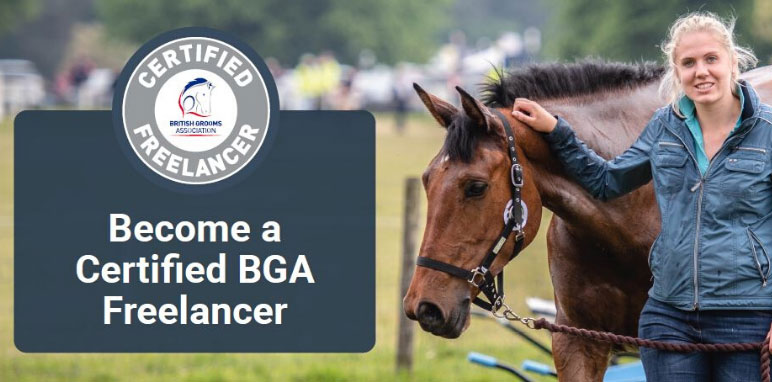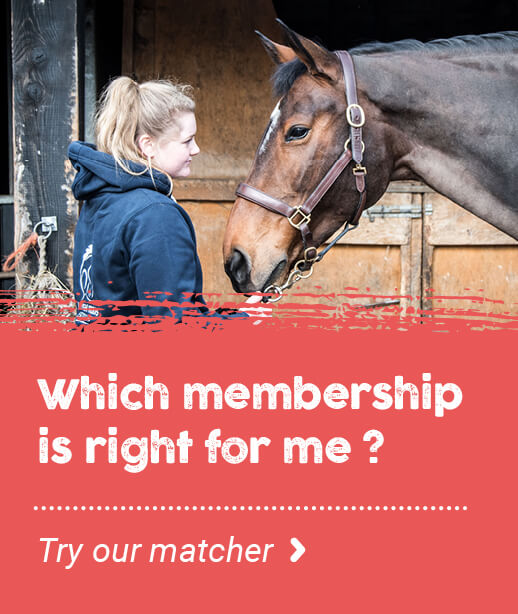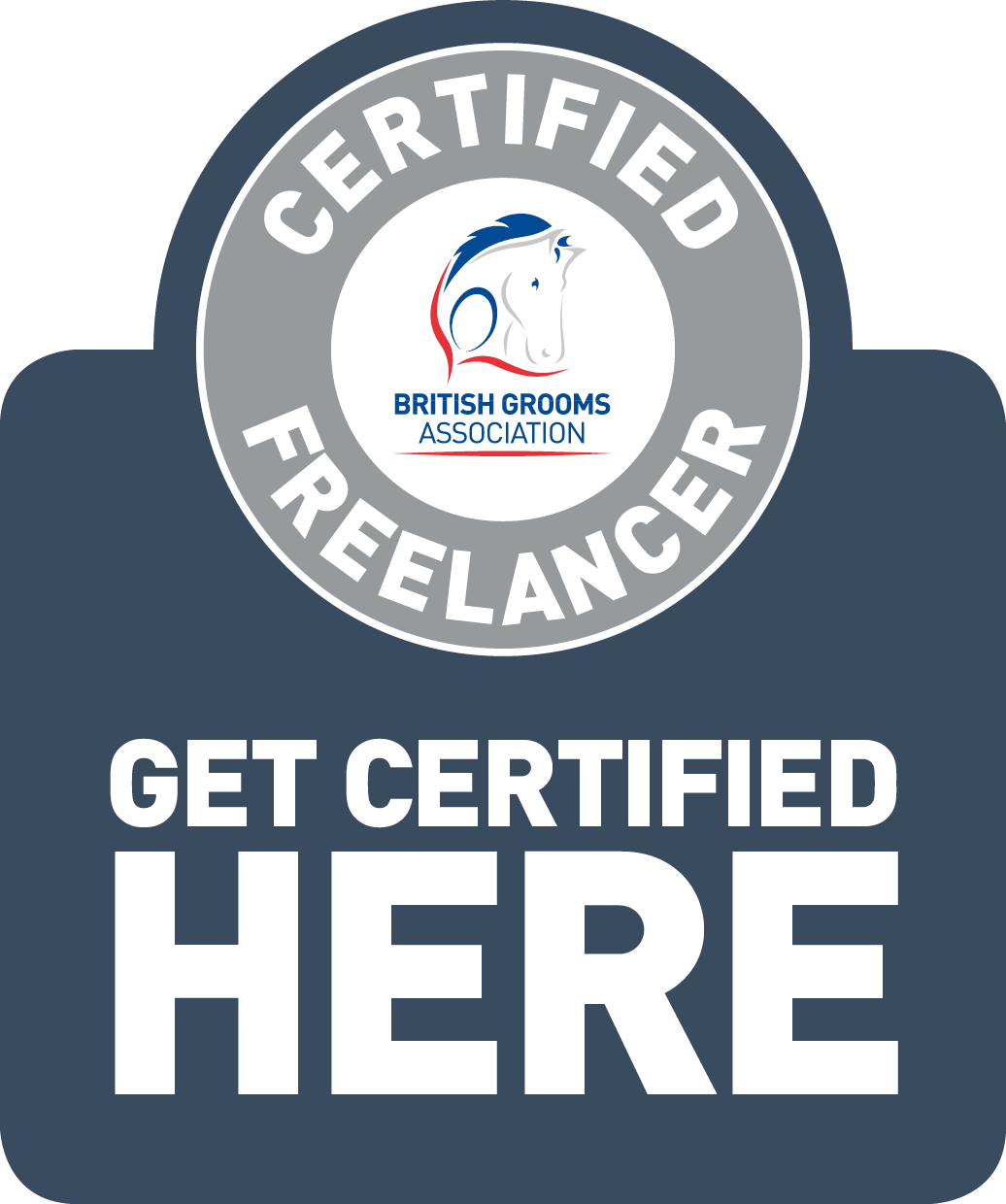- Join Now
- Login
- Member Zone
- Your Career
- Freelancing
- International Grooms Association
- BGA Training
- Healthy Yard Healthy Horses
- Transporting horses
- Brexit
- Safe workplace
- Student Zone
- Member Discounts
- BG Magazine
- Member services
- My employment
- Am I employed correctly
- Grooms Minds
- Safeguarding
- Legal Helpline
- BGA guide to the National Minimum Wage
- Training & Careers
- BGA CV Creator
- Horse groom training
- Where to Train
- BGA E Learning
- Career choices
- Change to Racing
- First Aid training for grooms
- Parents
- Grooms Jobs
- Grooms Life
- About
- News
- Contact


Your colleague has had a fall and banged their head - is it serious or not? How do you know? As it is difficult to diagnose a serious head injury in the field, we asked BGA sponsor, Medi-K Training to tell us what range of signs and symptoms we can look out for to help us recognise the severity of a head injury. "Think about the ‘mechanism of injury’ and what other damage may have occurred. Always be alert to the potential of internal head injuries, not just the obvious ones on the face. Injuries to the brain itself can get worse over time, so a first aider should be especially alert to the impact of time on any head injury. Changes in or new signs and symptoms will alert you to this. Head injuries may be: All of these can be fatal especially if the blow to the head has been traumatic or severe. There are 3 main forms of trauma that can negatively affect the brain: Direct impact against the skull during a sudden force (such as a head knock), A shaking where the brain impacts the skull in multiple places (this can happen alongside complex falls and whiplash type injuries), Rotational forces (these are common in activities where participants travel at high speed and their head may hit the ground at an oblique angle during a fall) Below we have listed some of the factors that would be a cause for concern for someone who has banged their head. How do we assess a bang to the head? What are we looking for? We could see signs quite quickly if it is a major injury. However, if the injury is small then it could be up to a few days before we see anything. In this case, ‘small’ does not always mean minor! The best way to spot any of these changes is to monitor the casualty closely and regularly. If we have any suspicions, the casualty should be taken to hospital as soon as possible. Wearing a properly fitted helmet will help protect the skull from damage but brain and skull injuries can still occur underneath a helmet. A helmet may need to be removed to properly assess the casualty and avoid pressure on their airway. You should also send the helmet to the hospital with the casualty so they can assess to potential injury site based on helmet damage. You can watch a video on how to safely remove a helmet from a casualty on our YouTube channel. When someone has a serious fall or impact, they may be more focussed on another injury such as a limb or a bleed. Always consider the ‘mechanism of injury’ and check the whole casualty, not just the obvious injuries. With head injuries , you should also be alert to the possibility of a neck or spinal injury. Even if you have had some form of first aid training in the past, can you be confident that if an accident occurred you would be able to apply the skills you learnt? Whether you are new to first aid or looking to brush up on your knowledge, first aid training is essential for anyone who works with horses." Medi-K run Equestrian specific first aid courses throughout the UK, including privately organised workshops. The Medi-K trainers are horse riders and owners themselves enabling them to provide equine specific, practical guidance. Find out more about Medi-K’s range of courses; firstaidtrainingcooperative.co.uk/equestrian Did you know BGA members have access to a bespoke online first aid course? This 'First Aid Essentials' e-learning course is FREE for BGA members, log into your account and find the course within the 'Training and careers' section. If you get injured and you are unable to work your income is likely to be reduced, or disappear completely if you are a freelancer. Protecting yourself is important, trust us, we hear about accidents all the time. Find out more about our groom specific insurance policies and how we can help to protect you. Join 1000’s of other grooms and belong to your professional association. Assessing head injuries
26th June 2023

Signs and symptoms of head injuries
How long would it be before we any of these signs and symptoms?
Will my helmet prevent head injuries? Should I remove it?
After the injury
Remember, regular monitoring of your casualty is advised for all head injuries to detect any change in their condition.
If in doubt, get them checked out.
Need training?

Book a course
E-Learning
Insurance
Are you insured?
BLOG ARCHIVE
- 2025 (13 ENTRIES)
- 2024 (52 ENTRIES)
- 2023 (60 ENTRIES)
- 2022 (35 ENTRIES)
- 2021 (24 ENTRIES)
- 2020 (19 ENTRIES)
- 2019 (45 ENTRIES)
- 2018 (36 ENTRIES)
- 2017 (7 ENTRIES)
What the personal accident policy covers you for:
- Whilst at work
- All stable duties – mucking out, grooming, washing off, turning out
- Clipping
- Riding – including hacking and jumping
- Hunting
- Lunging
- Breaking in
- Holding horse for a vet and other procedures
- Travelling horses both in the UK and abroad
- Competing in line with your job including: jumping, dressage, eventing
- Injuries that may happen to you whilst you are teaching - but you must also be grooming as part of your duties and not be a sole instructor
What the personal accident policy doesn’t cover you for:
- Riding in a race, point to point or team chase
- Stunt Riding
- Accidents occurring whilst travelling to and from work
- Riding and competing your own horse (but you can upgrade when applying for membership to include this)
- Public Liability – this is a separate insurance policy - the Freelance Groom Liability Insurance
- Care Custody and Control – this is a separate policy - the Freelance Groom Liability Insurance
If you require additional cover then please contact KBIS directly.
| GROOM | RIDER | EMPLOYER | |
|
When you are working for other people you do most of the following; muck out, turn out/catch in, tack up, groom horses, exercise Horses (including hacking, jumping and schooling), in the care of your employer/client. |
|
|
|
| Predominantly ride horses for other people including schooling, exercising and competing. | NO |
YES |
YES |
| Provide grooming services for someone else either full time or on a freelance basis i.e. an employer or a client. | YES |
NO |
NO |
| Employ staff – have an employers liability policy in your name | NO | NO | YES |
| Buy and sell horses | NO | YES | YES |

















